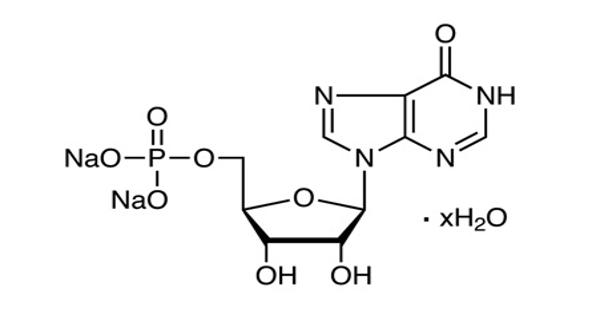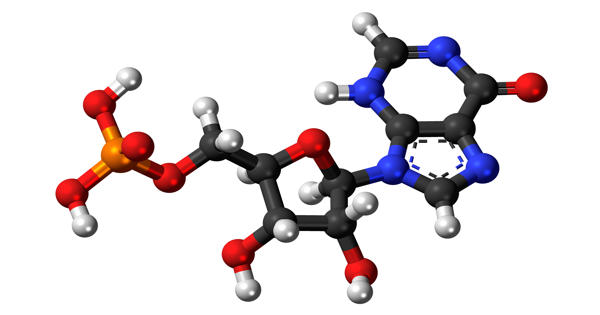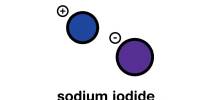Inosinic acid or inosine monophosphate (IMP) is a nucleotide (that is, a nucleoside monophosphate). It is a purine ribonucleoside 5′-monophosphate having hypoxanthine as the nucleobase. Widely used as a flavor enhancer, it is typically obtained from chicken byproducts or other meat industry waste. It inhibits phosphoribosyl pyrophosphate conversion in purine nucleotide synthesis, conversion of inosinic acid to xanthylic acid by purine nucleoside phosphorylase, and incorporation of nucleotide triphosphates into DNA. IMP is generated through adenosine triphosphate (ATP) degradation after an organism dies.
Inosinic acid is important in metabolism. It is the ribonucleotide of hypoxanthine and the first nucleotide formed during the synthesis of purine nucleotides. It has a role as a human metabolite, an Escherichia coli metabolite and a mouse metabolite. It can also be formed by the deamination of adenosine monophosphate by AMP deaminase. It is a purine ribonucleoside 5′-monophosphate and an inosine phosphate. It is a conjugate acid of an IMP(2-). It can be hydrolysed to inosine.
Important derivatives of inosinic acid include the purine nucleotides found in nucleic acids and adenosine triphosphate, which is used to store chemical energy in muscle and other tissues. It is a purine nucleotide which has hypoxanthine as the base and one phosphate group esterified to the sugar moiety. It is generated via adenosine triphosphate degradation in two metabolic pathways in which adenosine monophosphate (AMP) is generated and then degraded to either IMP or adenosine (AdR).

IMP is the major branch-point in the formation of all purine nucleotides. In the food industry, inosinic acid and its salts such as disodium inosinate are used as flavor enhancers. In one branch, IMP is irreversibly converted into AMP in two enzymatic steps. Outside of the human body, Inosinic acid has been detected, but not quantified in, several different foods, such as hickory nuts, turnips, pepper (spice), mountain yams, and muskmelons.
Applications
Inosinic acid can be converted into various salts including disodium inosinate (E631), dipotassium inosinate (E632), and calcium inosinate (E633). These three compounds are used as flavor enhancers for the basic taste umami with a comparatively high effectiveness.
In humans, inosinic acid is involved in the metabolic disorder called the gout or kelley-seegmiller syndrome pathway.
They are mostly used in soups, sauces, and seasonings for the intensification and balance of the flavor of meat.
The expression and activity of IMP can be affected by diseases and physiological process. It is the drug target for anticancer, antiviral, antimicrobial and immunosuppressive therapeutics.
Information Source:
















